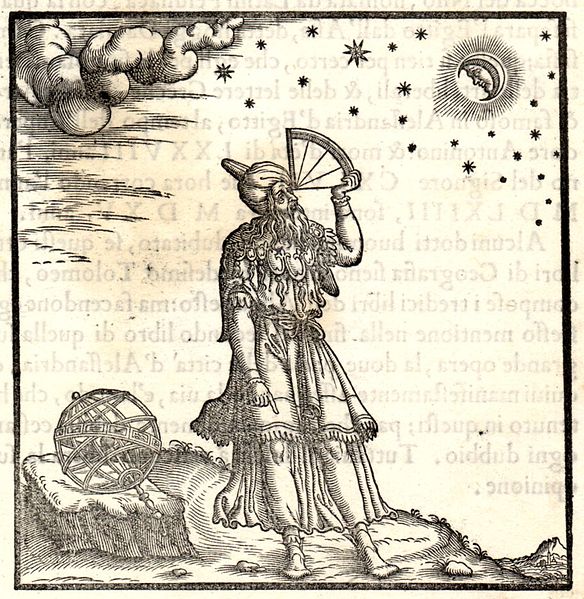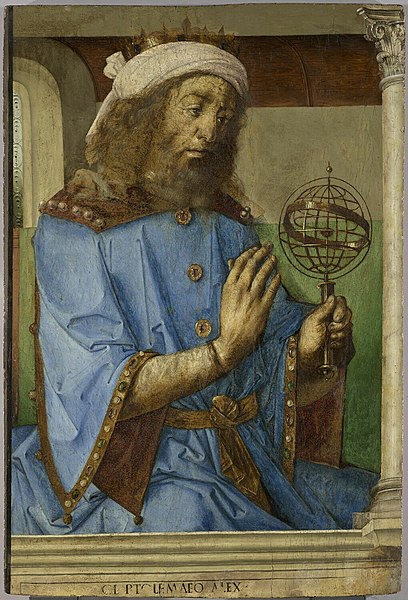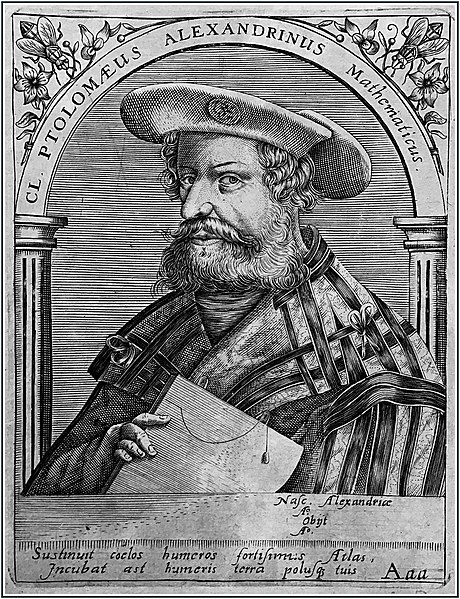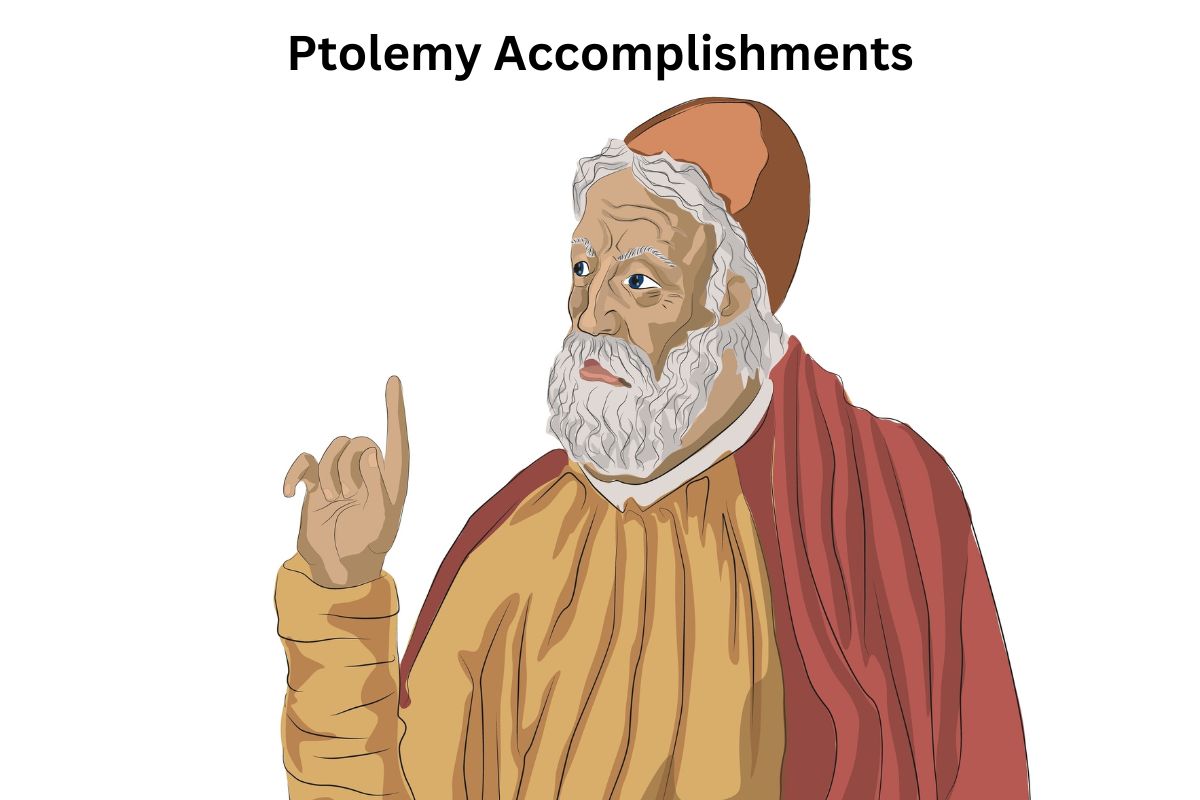Claudius Ptolemy, a prominent Greek mathematician, astronomer, geographer, and philosopher who lived in the 2nd century AD, made significant contributions to various fields of science and knowledge.
His work encompassed a wide range of disciplines, from his influential geocentric model of the universe in the “Almagest” to his pioneering efforts in cartography with the “Geography.”
Ptolemy’s contributions extended to mathematics, logic, optics, astrology, and musical theory, leaving a profound and lasting impact on the development of these disciplines. In this overview, we will delve into some of his most notable accomplishments and their historical significance.
Accomplishments of Ptolemy
1. “Almagest” – Geocentric model of the universe
Ptolemy’s most renowned work, the “Almagest,” was a comprehensive treatise on astronomy. In it, he proposed and developed a geocentric model of the universe, which was the prevailing cosmological model for over a millennium.
Also Read: Facts About Ptolemy
According to this model, Earth was positioned at the center of the universe, and celestial bodies, including the sun, moon, planets, and stars, revolved around it.
Ptolemy’s work included detailed mathematical descriptions of the movements of these celestial bodies, using a complex system of epicycles and deferents, which allowed him to predict their positions in the night sky with impressive accuracy.

2. Star catalog listing over a thousand stars
Within the pages of the “Almagest,” Ptolemy compiled an extensive star catalog. This catalog contained information on the positions and magnitudes (apparent brightness) of over a thousand stars.
Ptolemy’s meticulous observations and record-keeping laid the foundation for later astronomers and contributed significantly to the study of stellar astronomy.
His star catalog remained influential for many centuries, serving as a valuable reference for astronomers seeking to navigate and understand the night sky.
3. Contributions to trigonometry and chord tables
Ptolemy made important contributions to trigonometry, particularly through his development of a table of chords, sometimes referred to as the “Ptolemaic table of chords.”
This table provided values for the chords of angles in a circle, which was an early form of trigonometric tables. These values were used in various astronomical calculations, including determining the positions of celestial objects.
Ptolemy’s work in trigonometry not only aided his own astronomical research but also laid the groundwork for later developments in mathematics and trigonometry, which became essential tools for scientists and engineers in various fields.
4. “Geography” – World map based on latitude and longitude
Ptolemy’s “Geography” was a groundbreaking work that laid the foundation for modern cartography and geography.
In this influential book, Ptolemy introduced a novel system of mapping the Earth’s surface. He employed a coordinate system that used lines of latitude and longitude to represent locations on the Earth’s spherical surface.
Ptolemy’s use of latitude and longitude coordinates allowed for more accurate and detailed mapping of the known world at the time. His work included maps and detailed geographical descriptions of regions, cities, and landmarks.
While many of Ptolemy’s maps were based on earlier knowledge and were not entirely accurate by modern standards, his methods of cartography and coordinate systems were pioneering and influenced subsequent generations of mapmakers.

5. Introduction of a geographical coordinate system
Ptolemy’s introduction of a geographical coordinate system in his “Geography” was a significant innovation. He used lines of latitude to measure distances north or south of the equator and lines of longitude to measure distances east or west of a reference meridian.
This grid-like system made it possible to represent geographic locations precisely and facilitated navigation and the creation of more accurate maps. Ptolemy’s coordinate system became the basis for the development of modern cartography and navigation charts, which rely on latitude and longitude lines to this day.
6. Development of the “Tetralemma” logic system
Ptolemy made contributions to the field of philosophy with his development of the “Tetralemma.” This logic system categorized statements or propositions into four possibilities:
- a. True (the statement is true)
- b. False (the statement is false)
- c. Indeterminate (the truth or falsity of the statement cannot be determined)
- d. Both true and false (the statement is both true and false under different conditions or perspectives).
Ptolemy’s Tetralemma was a significant development in ancient philosophy and provided a framework for analyzing and categorizing different types of statements and arguments. While this system is not widely used in contemporary philosophy, it had an influence on early philosophical thought and contributed to discussions on the nature of truth and knowledge.

7. Work on astrology, including the “Tetrabiblos”
Ptolemy’s “Tetrabiblos” is a four-volume work that focuses on astrology. While astrology is not considered a science in the modern sense, it was a subject of great interest and significance during Ptolemy’s time.
In the “Tetrabiblos,” Ptolemy sought to provide a systematic and rational basis for astrological practices. He discussed topics such as the influence of celestial bodies (planets and stars) on human affairs, the casting of horoscopes, and the interpretation of astrological charts.
Ptolemy’s work attempted to bring some order and structure to astrological techniques, and it played a role in the development of astrological thought during his era.
8. Treatise on optics, studying light and refraction
Ptolemy wrote a treatise on optics, aptly titled “Optics,” in which he explored the properties of light, vision, and refraction.
He investigated how light rays interact with different media, such as air and water, and how they are bent or refracted when passing through these substances. Ptolemy’s work on optics contributed to the understanding of how lenses and mirrors could be used to manipulate light and enhance vision.
Although his optical theories were later refined by scholars like Ibn al-Haytham in the Islamic Golden Age, Ptolemy’s foundational work laid the groundwork for further advancements in the field of optics.
9. Exploration of musical theory in “Harmonics”
In his work “Harmonics,” Ptolemy delved into the realm of musical theory. He explored the mathematical relationships between musical intervals, the theory of consonance and dissonance, and the nature of musical scales.
Ptolemy’s work in this area contributed to the understanding of music’s mathematical underpinnings and its relationship to other scientific disciplines.
While his ideas on music have evolved over time and differ from modern theories, his work marked an early attempt to bring mathematical precision to the study of music.
10. Lasting influence on astronomy, geography, and mathematics
Perhaps one of Ptolemy’s most significant accomplishments was his lasting influence on various fields of science and knowledge. His works, particularly the “Almagest” and the “Geography,” remained influential for centuries.
Ptolemy’s geocentric model of the universe, despite its eventual replacement by the heliocentric model, played a pivotal role in shaping astronomical thought for over a thousand years. His contributions to geography and cartography laid the foundations for modern mapmaking and navigation.
Additionally, his work in mathematics, trigonometry, and logic had a lasting impact on these fields, providing valuable insights and methods that continued to be studied and built upon by later scholars. Ptolemy’s legacy endures as a testament to the enduring power of ancient scholarship and its influence on the development of modern science and mathematics.
